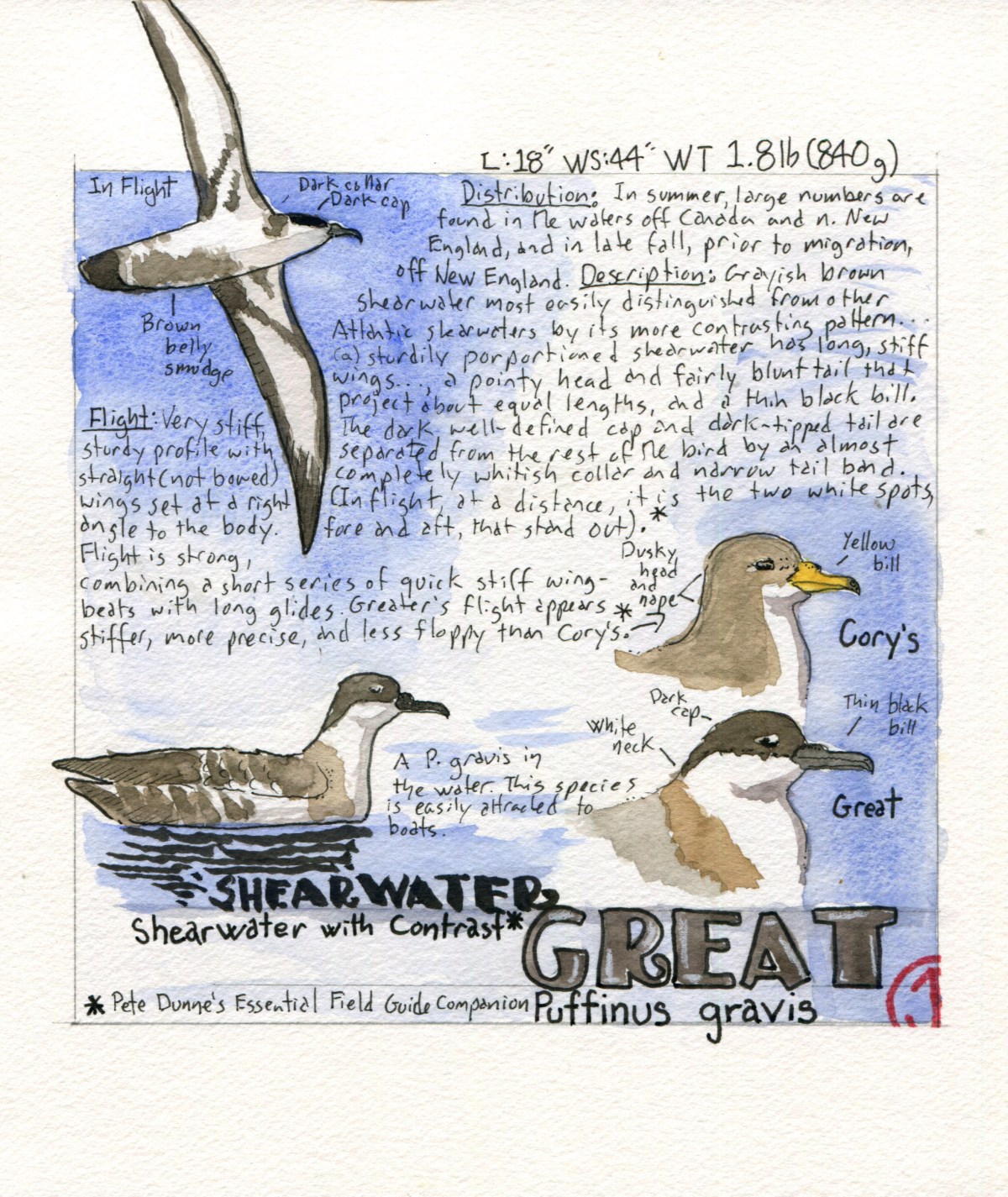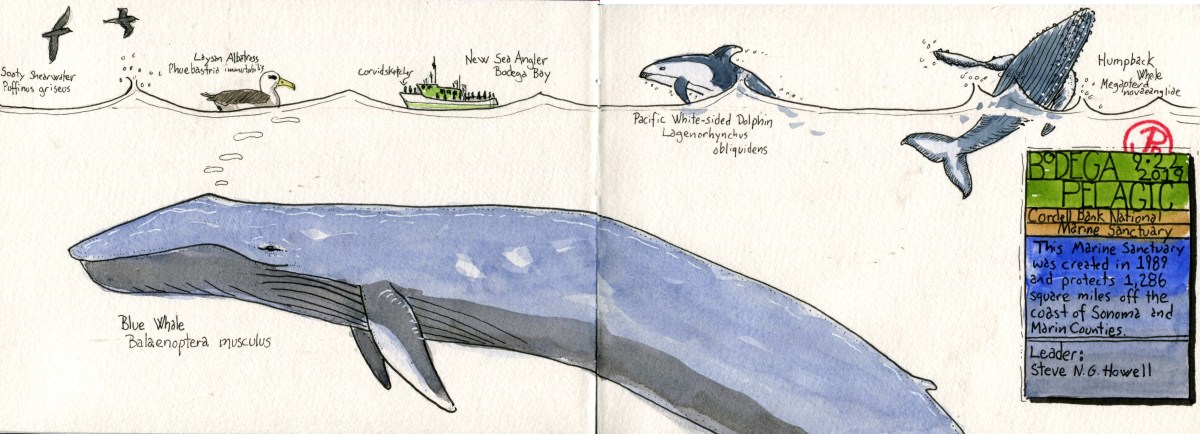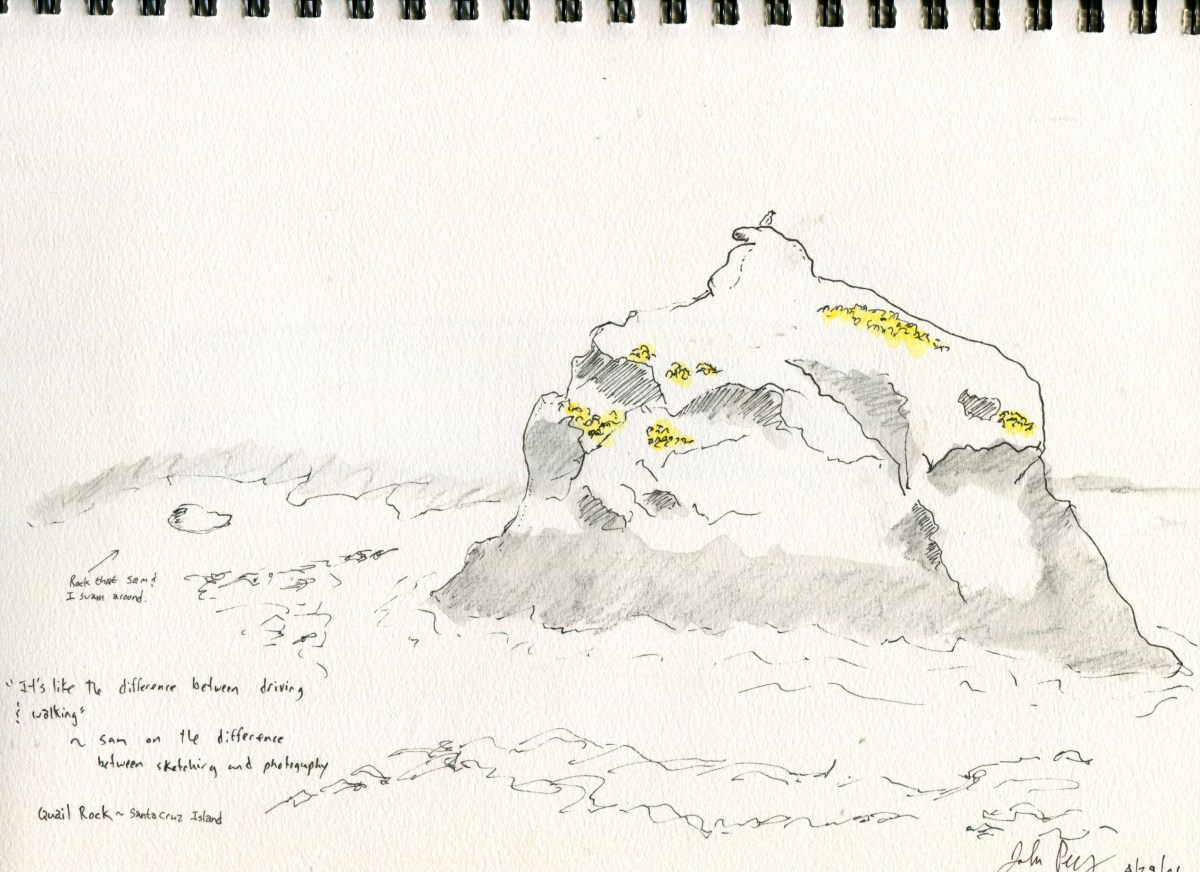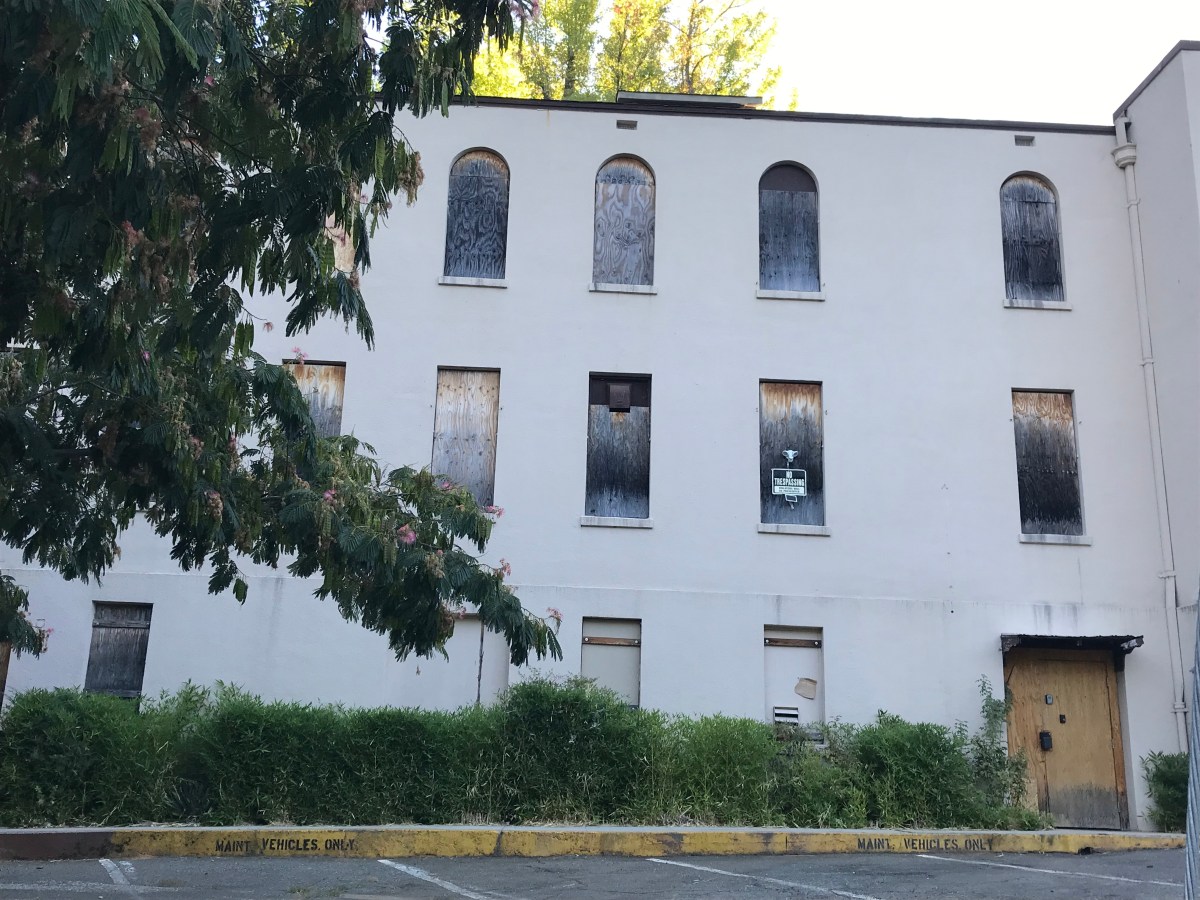“At length did cross an Albatross,
Through the fog it came;
As if it had been a Christian soul,
We hailed it in God’s name.”
The Rime of the Ancient Mariner (1834)
Samuel Taylor Coleridge
We met at 6:30 AM in the dirt parking lot of Bodega Bay Harbor.
A grizzled, sandaled sea dog of a Welshman stepped forward. He was to be our guide over the next ten hours.
He was and is Steve Howell, seabird author (his book Oceanic Birds of the World was in my pack) and expert of the avian world and he would be helping to identify the pelagic life we would be seeing in the Cordell Bank National Marine Sanctuary.
While it seemed nice and calm on the dock, Captain Rick warned us of choppy and windy conditions. And things seem nice enough as we headed out of the harbor but once we hit open waters the New Sea Angler bobbed on the waves like a cork. There was a steady stream of birders heading to the stern to “feed the fish”. Luckily I had a stomach of iron and I never suffered from seasickness. But this trip was going to test my will and my digesting breakfast.
Close to port we saw many nearshore species such as brown pelicans, common murres, cormorants, and California gulls. A little further out we saw our first pelagic species: sooty shearwater. As Steve Howell noted, “They’re called shearwaters because, well, they shear the water.” These dark oceanic birds flew with ease, inches above the rolling water, seemingly cutting the surface.
Even further out, we saw our first whale spout. Off on the horizon, to the port side, I saw a humpback whales breach! This is when a cetacean partially or wholly leaves the water’s surface.
We were seeing a smattering of birds followed by a pelagic barrens of no birds. Captain Rick headed towards an anchovy school where about ten humpbacks were feeding. Soon Pacific white-sided dolphins appeared in the swells besides us. One highlight was a lone humpback that passed under the New Sea Angler and surfaced close to our starboard side. The whale was so close that I could hear the leviathan exhaling!
More shearwaters appeared around us: Buller’s, sooty, and pink-footed. Where the whales are you will find pelagic birds. We were still in relatively shallow waters and we had not yet seen the oceans most iconic species: the albatross. Albatross is a deep water species, rarely seen from land.
When we were out about 25 miles, the winds peaked at 20 knots and we saw our first albatross, easily riding the wind. This was the black -footed albatross and we would see more as we labored above the submarine canyon near Cordell Banks.

Two amazing highlights were just ahead of us, above the canyon’s edge. Two massive whale spouts, one after the other, billowed in the air, just to our starboard. Two bluish-gray whales rolled on the water and then appeared again heading on an easterly course, across the canyon. These whales did not appear black, like the humpbacks but we’re blue like their namesake: blue whale. These are the earth’s largest creatures; the largest creatures that ever have lived on the planet earth.
These two whales had their accompanying mass of pelagic birds but one was a sought after bird for this trip. Mario, one of the spotters, called out, “Laysan!” And every birder within earshot rushed to the bow of the boat, eagerly scanning the pitching waves from a pitching boat. Not an easy task. No albatross. I moved into position, scanning the waters in front of us. The swell moved towards us revealing the following trough. And there was what looked like a massive western gull. “Laysans on the water in front of the boat!” I exclaimed.
The Laysan sat on the pitching waters, stretching it’s long, narrow wings. The birder density was reaching critical mass on the bow as this was a sought after a lifer as well as a Sonoma County bird. After a quick preen, the albatross stretched out both wings, ran across the waters, and effortlessly lifted off into the air. It headed to the east, presumably to catch up with the blue whales.
 A sketch to pass the time as we headed back to port. I had attempted to sketch earlier but didn’t have my sea legs yet and it came off rather disheveled. Sketching on a moving boat is not as hard as it seems, and I had some experience in the boats of the Amazon and the Pantanal. But Big Blue offers huge challenges for the sketcher of the waters.
A sketch to pass the time as we headed back to port. I had attempted to sketch earlier but didn’t have my sea legs yet and it came off rather disheveled. Sketching on a moving boat is not as hard as it seems, and I had some experience in the boats of the Amazon and the Pantanal. But Big Blue offers huge challenges for the sketcher of the waters.






 A sketch to pass the time as we headed back to port. I had attempted to sketch earlier but didn’t have my sea legs yet and it came off rather disheveled. Sketching on a moving boat is not as hard as it seems, and I had some experience in the boats of the Amazon and the Pantanal. But Big Blue offers huge challenges for the sketcher of the waters.
A sketch to pass the time as we headed back to port. I had attempted to sketch earlier but didn’t have my sea legs yet and it came off rather disheveled. Sketching on a moving boat is not as hard as it seems, and I had some experience in the boats of the Amazon and the Pantanal. But Big Blue offers huge challenges for the sketcher of the waters. 




 There are no maintenance vehicles in the parking lot of a building that needs lots of maintenance. All the windows of the former hospital are boarded up.
There are no maintenance vehicles in the parking lot of a building that needs lots of maintenance. All the windows of the former hospital are boarded up.